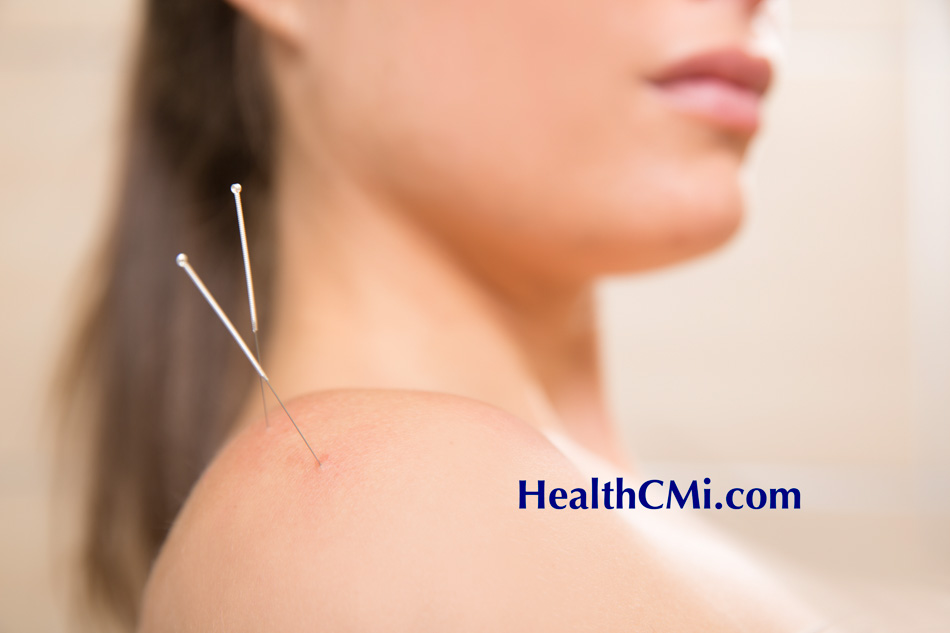Acupuncture on the scalp combined with electroacupuncture has been shown to have a significant therapeutic effect on acute periarthritis of the shoulder. Researchers from the Jinshan Branch of Shanghai Sixth People’s Hospital treated 90 patients with acute shoulder periarthritis using either electroacupuncture alone or a combination of electroacupuncture and scalp acupuncture. The results indicated that the combined treatment group had better patient outcomes. The combination of scalp acupuncture and electroacupuncture significantly improved pain levels, shoulder joint function, and reduced inflammation markers in patients. [1]
Acute periarthritis of the shoulder, also known as shoulder periarthritis or adhesive capsulitis, is an inflammatory condition affecting the shoulder joint. This condition primarily involves the soft tissues surrounding the shoulder, including the tendons, ligaments, and joint capsule. It leads to pain and stiffness in the shoulder, often severely restricting the range of motion. Clinical observation indicators included VAS scores and the Constant-Murley shoulder function scoring scale to evaluate changes in shoulder function before and after treatment, as well as serum levels of IL-6 and TNF-α.
Clinical efficacy was categorized into three levels based on symptoms:
1. Cured: Complete disappearance of shoulder pain, full recovery of shoulder joint function and range of motion, and a return to normal life.
2. Improved: Significant reduction in shoulder pain, a notable increase in the range of motion of the shoulder joint, with daily life largely unaffected.
3. Uncured: No improvement in symptoms or signs such as shoulder pain and limited function, or worsening of the condition.
The total effectiveness rate in the combined treatment group was 88.89%, while the control group had a lower effectiveness rate of 75.56%. After treatment, the Visual Analog Scale (VAS) scores in both groups were significantly lower than before treatment, with the treatment group scoring 2.75 ± 1.30, which was lower than the control group. The Constant-Murley shoulder function scores significantly improved after treatment, with the treatment group scoring 80.89 ± 12.92, higher than the control group. The serum levels of IL-6 and TNF-α in both groups were significantly lower than before treatment, with the treatment group showing IL-6 levels of 23.87 ± 17.92 ng/L and TNF-α levels of 12.01 ± 4.09 ng/L, both lower than those in the control group.
Inclusion criteria included patients aged 45 to 55 years, with disease onset within 30 days, experiencing worsening shoulder pain at night affecting sleep, limited shoulder joint function particularly in forward flexion, abduction, and extension. Severe cases exhibited a “shoulder shrug” phenomenon with widespread tenderness around the shoulder joint, and shoulder CT or MRI showed degenerative changes or muscle damage. Exclusion criteria included shoulder pain and functional limitations caused by fractures, dislocations, tumors, tuberculosis, myocardial infarction, gallstones, Pancoast tumors, pregnancy, severe mental illness, severe heart disease, bleeding disorders, and coagulopathy.
Both groups were treated once daily, with six sessions per course, resting 2 to 3 days between courses, for a total of two courses. The control group was treated with electroacupuncture alone, targeting primary acupoints including:
• Jianyu (LI15)
• Jianzhen (SI9)
• Jianliao (SJ14)
• Jianqian (Extra point)
• Ashi (trigger points)
Supplementary points used included:
• Hegu (LI4)
• Houxi (SI3)
• Waiguan (SJ5)
Acupuncture needles were applied with a mild reinforcing and attenuating manner. Each two adjacent acupoints were connected to an electroacupuncture device using continuous waves at a frequency of 2 Hz, with the current adjusted to patient tolerance, for 20 minutes. Note, Jianqian is located at the anterior aspect of the shoulder, midway between the end of anterior axillary crease and LI15.
The combined treatment group received additional scalp acupuncture, targeting the middle 2/5 area of the motor and sensory zones on the opposite side of the affected shoulder. The procedure involved the patient lying supine. Routine disinfection was conducted, then acupuncture needles were inserted obliquely. After obtaining deqi, continuous twisting of the needles was performed. Functional exercises were performed during the 20 minutes of needle retention time.
Reference:
Li Lin, Wang Yuxu, Wang Xinrong, Wang Hua, Deng Zhen, Clinical Observation on Treatment of Acute Periarthritis of Shoulder with Scalp Acupuncture Combined with Electroacupuncture, ACTA Chinese Medicine, No6, 10 June 2024, Vol. 39 No. 313.


